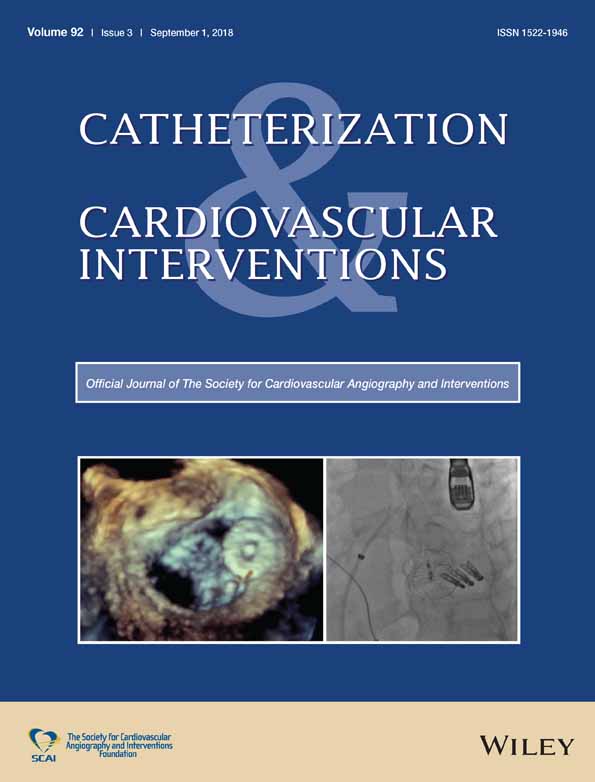Optimizing hemodynamics of transcatheter aortic valve-in-valve implantation in 19-mm surgical aortic prostheses
Abstract
Objective
To demonstrate the feasibility of achieving good hemodynamic results with valve-in-valve transcatheter aortic valve replacement (ViV TAVR) for degenerated 19 mm surgical bioprosthetic valves.
Background
Considerable controversy exists regarding ViV TAVR within 19mm surgical prostheses due to concerns of elevated valve gradients and mortality.
Methods
Among all patient undergoing ViV TAVR between 7/2016 and 4/2017 for symptomatic severe bioprosthetic aortic stenosis (AS), five had a 19 mm surgical valve in place and were included in this publication. None of the patients had patient-prosthesis mismatch. Aggressive post-dilation was performed in four out of five cases using a special technique we describe below.
Results
In all cases, mean aortic valve (AV) gradients significantly improved post-ViV TAVR, particularly after post-dilation. Interestingly, high pressure post-dilation of the ViV resulted in an increase in the diameter of surgical valve stent frame dimensions in nearly all patients who underwent post-dilation.
Conclusions
Good hemodynamic outcome is possible with aggressive post-dilation in patients with 19 mm failed surgical bioprostheses. High-risk patients with 19 mm failed surgical prostheses who do not otherwise have viable surgical options should be considered for ViV TAVR.
CONFLICT OF INTEREST
Nothing to report.




